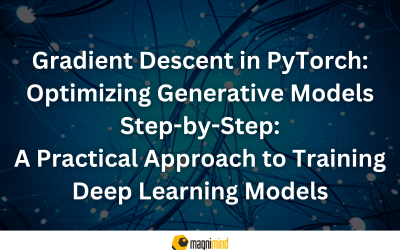With the tremendous popularity of data science that shows no signs of slowing down, those looking for future jobs for data science professionals should be ready for some good news. As a humungous 2.5 Quintillion bytes of data gets generated each day, there’s a growing demand for professionals who are capable of organizing this enormous pile of data to offer meaningful insights, which in turn can help businesses make informed decisions and find relevant solutions. No wonder why future jobs for data science professionals will hail these people as the hero since these are those who can extract meaning from seemingly innocuous data – no matter whether it’s structured and organized or unstructured and disorganized. Though the post of data scientist has featured as the leader among other jobs for a few years in a row, the increasing emphasis on AI (artificial intelligence) and ML (machine learning) has given rise to a few jobs, the demand for which may soon outgrow that of data scientists. In fact, the competition between machine learning engineers and data scientists is heating up and the line between them is blurring fast.
Before taking a deeper look into future jobs for data science professionals, let’s take a closer look into how artificial intelligence and machine learning have evolved over the years and what lies ahead in store for these domains.
Artificial Intelligence – its origin and evolution
It was mathematician and scientist Alan Turing who spent a lot of time after the Second World War on devising the Turing Test. Though it was basic, this test involved evaluating if it was possible for artificial intelligence to hold a realistic conversation with a person, thus convincing them that they were also human.
Since Turing’s Test, AI was restricted to fundamental computer models. It was in 1955 when John McCarthy – a professor at MIT, coined the term “artificial intelligence”. During his tenure at MIT, he built an AI laboratory. Full List Processing (LISP) was developed by him there. LISP was a computer programming language for robotics intended to provide expansion potential as technology improvements happened with time.
Though promise was shown by some base model machines – be it Shakey the Robot (1966) or Waseda University’s anthropomorphic androids WABOT-1 (1973) and WABOT-2 (1984), it wasn’t until 1990 when Rodney Brooks revitalized the concept of computer intelligence. But it took many more years for artificial intelligence to evolve as it was only in 2014 that Eugene, which was a chatbot program designed by the Russians, was able to successfully convince 33% of human judges. According to Turing’s original test, more than 30% was a pass, though plenty of room was left for stepping it up in the future.
From its humble beginnings, artificial intelligence (AI) has evolved as perhaps the most significant technological advancement in recent decades across all industries. Be it the robotics aspect of AI, or the implementation of machine learning (ML) technologies that are driving useful insights from big data, the future seems to hold a lot of promise. In fact, the enhanced information extracted from large chunks of data is helping companies today to mitigate supply chain risks, improve customer retention rates, and do a lot more.
An example of how these technologies could change the way we live and work became evident when Amazon introduced its Alexa in the workplace. However, many believe that the AI-powered, voice-activated device signals just the beginning. Thanks to NLP (natural language processing), which is made possible via machine learning, modern computers, hi-tech systems, and solutions can now know the context and meaning of sentences in a much better way. As NLP becomes more improved and refined, humans will start communicating with machines seamlessly exclusively via voice without the need of writing code for a command. Thus, professionals who can design and test devices based on NLP and voice-driven interactions are likely to be in high demand in the future.
With the growing interest and implementation of artificial intelligence in various fields and the promising future the global machine learning market (predicted to grow to $8.8B by 2022 from $1.4B in 2017, according to a report by Research and Markets), there’s bound to be a wide variety in future jobs for data science professionals as well those specializing in AI and ML.
Future jobs to consider in the field of data science with an emphasis on AI and ML
Data scientists would continue to be in demand though a new position of machine learning engineer is giving it a tough competition as more and more companies are adopting artificial intelligence technologies. In many places where data specialists are working, this relatively new role is emerging slowly. Perhaps you are now wondering who a machine learning engineer is, what the skill requirements for this position are and what kind of salary is on offer.
Let’s try to find answers to these questions.
Who’s a Machine Learning Engineer?
These are sophisticated programmers whose work is to develop systems and machines that can learn and implement knowledge without particular direction.
For a machine learning engineer, artificial intelligence acts as the goal. Though these professionals are computer programmers, their focus goes further than particularly programming machines to execute specific tasks. Their emphasis is on building programs that will facilitate machines to take actions without being explicitly directed to carry out those tasks.
The roles performed by these professionals include:
- Designing machine learning systems
- Studying and changing data science prototypes
- Choosing
- Doing research and applying suitable ML tools and algorithms
- Selecting fitting datasets and methods for data representation
- Developing machine learning applications that are consistent with the requirements
- Conducting machine learning experiments and tests
- Carrying out statistical analysis and modifying them using test results
- Training and retraining systems, as and when needed
- Broadening the existing machine learning frameworks and libraries
- Being well-informed on the developments in the domain
When it comes to the skill sets that machine learning engineers need, there are some that are common with those required by data scientists such as:
- Programming Languages: Though Python is considered the leading language, you’ll probably have to learn R, C++, and Java. At some point, you’re likely to work on MapReduce as well.
- Statistics: You’ll need to be familiar with vectors, matrices, matrix multiplication, etc.
- Data Cleaning and Visualization: With data cleansing, you’ll help to boost the efficiency of companies and even save their precious time. Data visualization would be equally important as it could have a make-or-break effect when it’s about the impact of your data.
- Machine Learning techniques: You’ll need to have a good understanding of machine learning techniques such as decision trees, supervised machine learning, logistic regression, etc. Knowledge of deep neural network architectures is equally important as believed to be the next level in the domain.
- Big Data Processing Frameworks: As a humungous amount of data gets generated today at a great speed, you need frameworks such as Spark and Hadoop to handle Big Data. Since a majority of organizations these days are using Big Data analytics to get hidden business insights, you need to be confident in your use of these Big Data processing frameworks as a machine learning
- Industry Knowledge: Even when you have all the technical skills mentioned above, you won’t be able to channel them productively if you lack business acumen and don’t know what elements contribute toward a successful business model. Be it helping the organization discover new business opportunities, or being able to distinguish the potential challenges as well as existing problems that need to be solved for the business to keep going and growing, you should know how the industry functions and what will benefit the business.
- Computer Vision (CV): ML and CV are Computer Science’s two core branches that can function and power extremely sophisticated systems that depend exclusively on ML and CV algorithms. However, by combining the two, you can do much more, which makes it important to have a solid understanding of both ML and CV.
In addition to the above, you must have the following ML engineer skills:
- Language, Video, and Audio Processing: This includes having good control over libraries like NLTK, Gensim, and techniques like sentimental analysis, word2vec, and summarization.
- Signal Processing Techniques: You should have a robust understanding of these techniques, which would be needed to solve different problems.
Additionally, you should have knowledge of applied Mathematics (with emphasis on Algorithm theory, quadratic programming, gradient descent, partial differentiation, convex optimizations, etc.), software development (Software Development Life Cycle or SDLC, design patterns, modularity, etc.), and time-frequency analysis as well as advanced signal processing algorithms (like Curvelets, Wavelets, Bandlets, and Shearlets).
Other jobs
Apart from data scientist and machine learning engineer, some other future jobs for data science professionals could be
- Data Architect/Data Engineer
- Data Analyst
- Big Data Engineer
- Artificial intelligence Experts
- Information Security Analysts
- Process Automation Experts
- Robotics Engineers
- Human-Machine Interaction and User Experience Designers
- Blockchain Specialists
Thus, with the increasing adoption of artificial intelligence and machine learning, there won’t be any dearth of future jobs for data science professionals.



